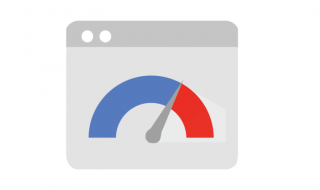To get better insights into the performance of our on site YouTube videos, we have created a unique Google Tag Manager script. We will gladly share it with you in our next blog post. Today we want to go through the basics of this tool and answer some questions like ‘what does Google Tag Manager do’, ‘what are its components’, and ‘why you should use it for SEO purposes’. Let’s dive right into it.
Why Use Google Tag Manager (GTM)?
The main asset your business has is data, the more the better. Aside from being an intermediator between your online audience and your business, your website acts as a data collector, of course, if it is set up to do so. It’s not only about collecting personal data such as emails and phone numbers, which is certainly valuable information, but also about monitoring the on-site activity.
Being able to track how people interact with your website or, in other words, to look at it from the user’s point of view is crucial for the betterment of both its design and marketing.
Google Analytics delivers plenty of data on this matter but this service alone doesn’t cover it all. Coupled with Google Tag Manager, Google Analytics can “tell” you much more about your visitors. More importantly, Google Tag Manager allows you to work with on-site tags without amending any of your source code.
What Does Google Tag Manager Do Exactly?
(including but not limited to)
- Helps you to manage how your on-site JavaScript and HTML tags are deployed and executed
- Tags your site for remarketing
- Collects information and send it to web analytics services such as Google Analytics
- Eases the integration between your website and third-party services
What Can Tags Be Used For?
Tags are simply snippets of HTML code that are added to a website to collect information about the on-site activity. Tags can serve a variety of uses and you can customize them depending on your specific marketing purposes, or use it for:
- Tracking your forms that are submitted
- Generating heat maps
- Scroll tracking
- Tracking items being added or removed from the shopping cart
- Monitoring files that have been downloaded
- Seeing how people land on your website, etc.
There are a set of natively-supported tags you can use in GTM or you can create your own tags based on custom templates.
Google Tag Manager allows you to simplify the process of adding the code for each of your tags to the source code of your site, control the execution of these tags and handle your tag data using triggers, variables, and data layers.
GTM Structure and Terminology
There are Google Tag Manager components that might require an explanation of what they are and how they work together prior to using them.
Containers
A GTM container is exactly what it sounds like, as it is an entity that contains all of the tags, triggers, and variables for your website. To start working with Google Tag Manager, you will be required to create a container that will ‘hold’ everything together.
Tags
Tags are triggered based on events and are executed when a web page or mobile app loads, or in response to some interaction on a page or mobile app.
Triggers
Triggers serve to fire the needed tags when a specific user’s action happens on-site. A trigger reacts to certain events that match a trigger’s definition to fire the tag it is assigned to. For example, if you want a tag to send data to Google Analytics every time your Contact Us form is submitted, you assign a trigger that will fire the tag.
Variables
Variables are placeholders that contain values as conditions that need to be met in order for triggers to fire a tag. Conditions might include specific URLs, the presence of specific HTML IDs or classes, cookie values, random number values, etc.
Data Layer
The data layer temporarily holds your data. It is a well-organized JavaScript object that keeps your data structured in order to then pass it to Google Tag Manager. This component is optional meaning you can still use GTM even if you don’t create any data layers yourself. But for better website performance, as well as for specific events tracking, you will need to have a data layer.
More Benefits of Google Tag Manager
- Helps to manage tags that already exist on your website
- Allows you to track specific types of on-site activity that matter to your business and send this data to Google Analytics or other web analytics systems you use
- Improves your site speed as you organize your data thus reducing time to execute tags
- GTM has a preview and debug mode to test your settings before making them live
- Ready-made solutions for integration with a wide range of third-party services
- Controlled account access
- Trackable and reversible changes
- GTM is a free tool
Now you know more about how Google Tag Manager works and the main benefits it offers. In the near future, we will publish a tutorial on how to track YouTube videos with Google Tag Manager so stay tuned to our blog. Contact us if you need any help with the Google Tag Manager setup.
Last updated on June 24th, 2022



 Phone Consultation
Phone Consultation
 Request a quote
Request a quote
 Text a Message
Text a Message